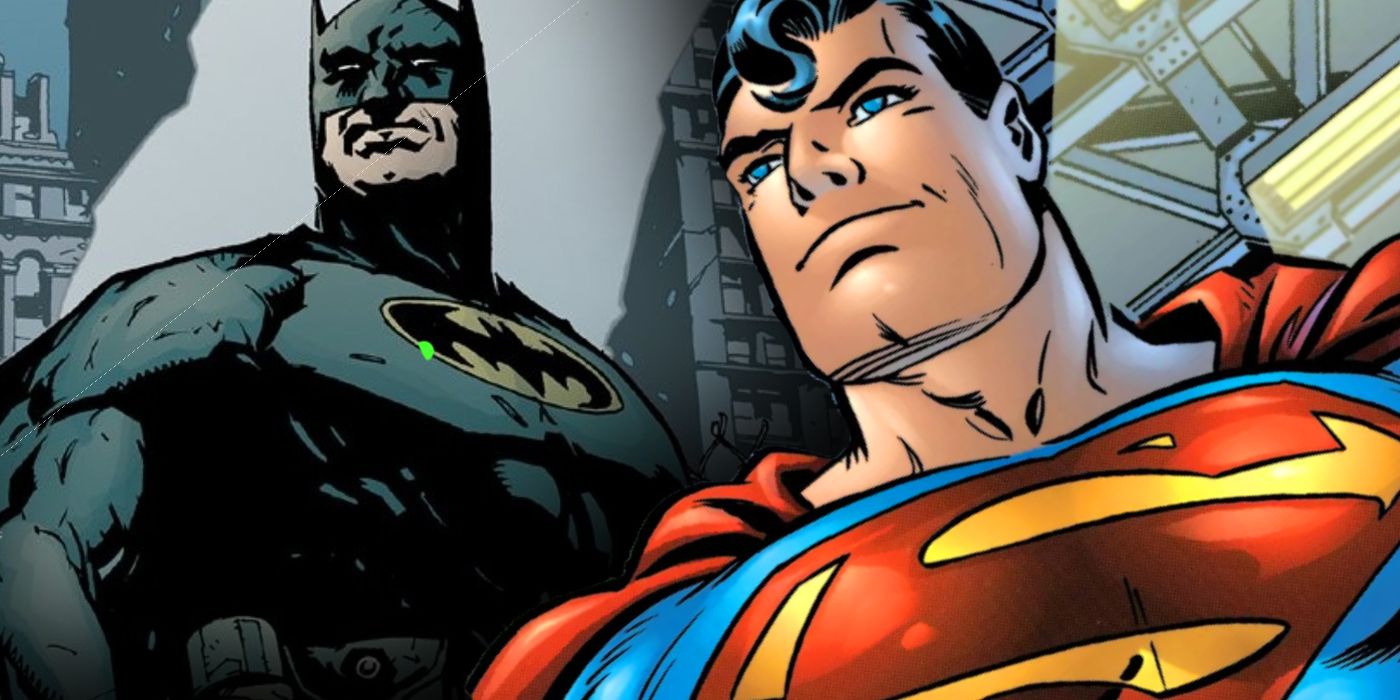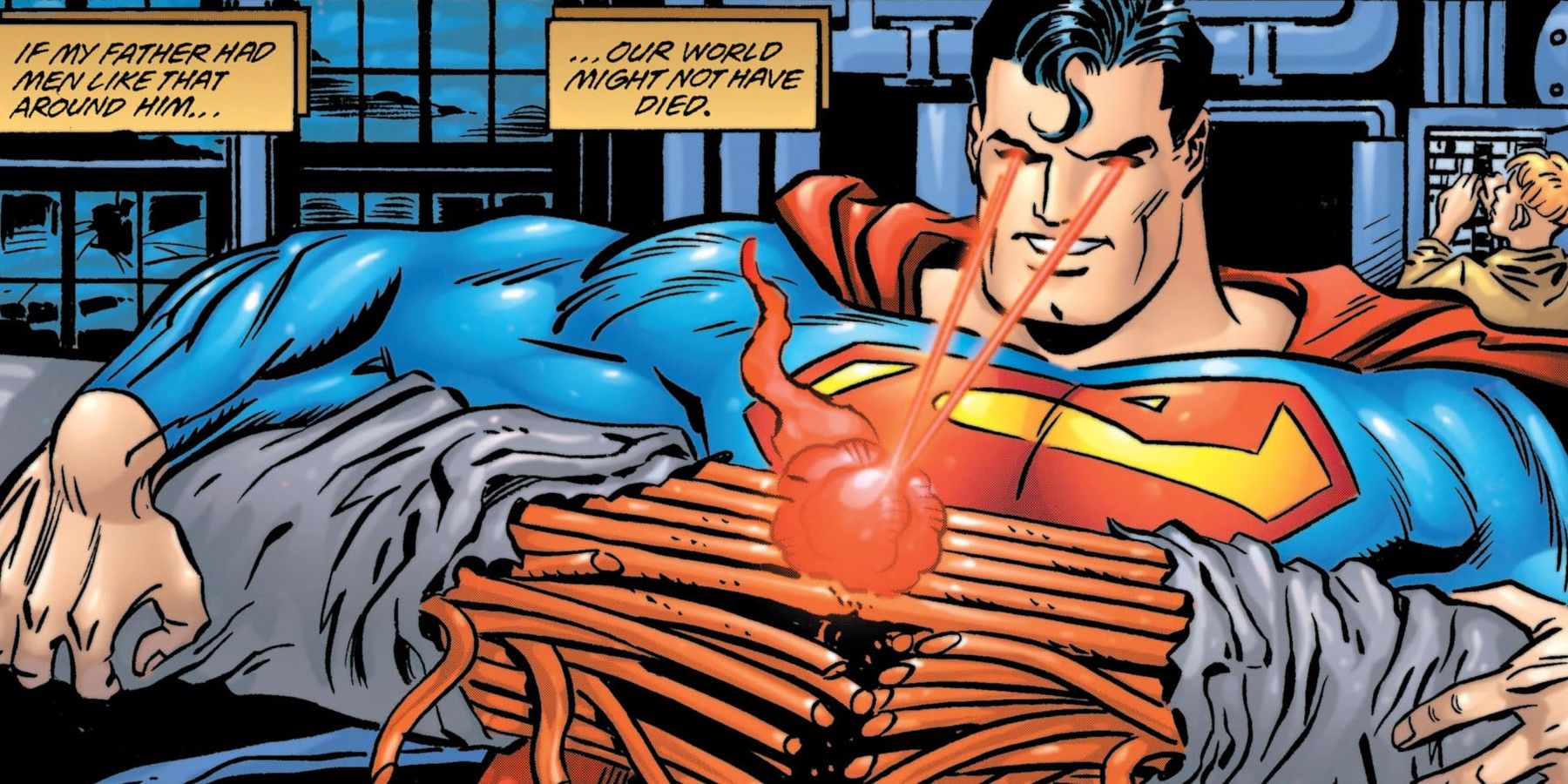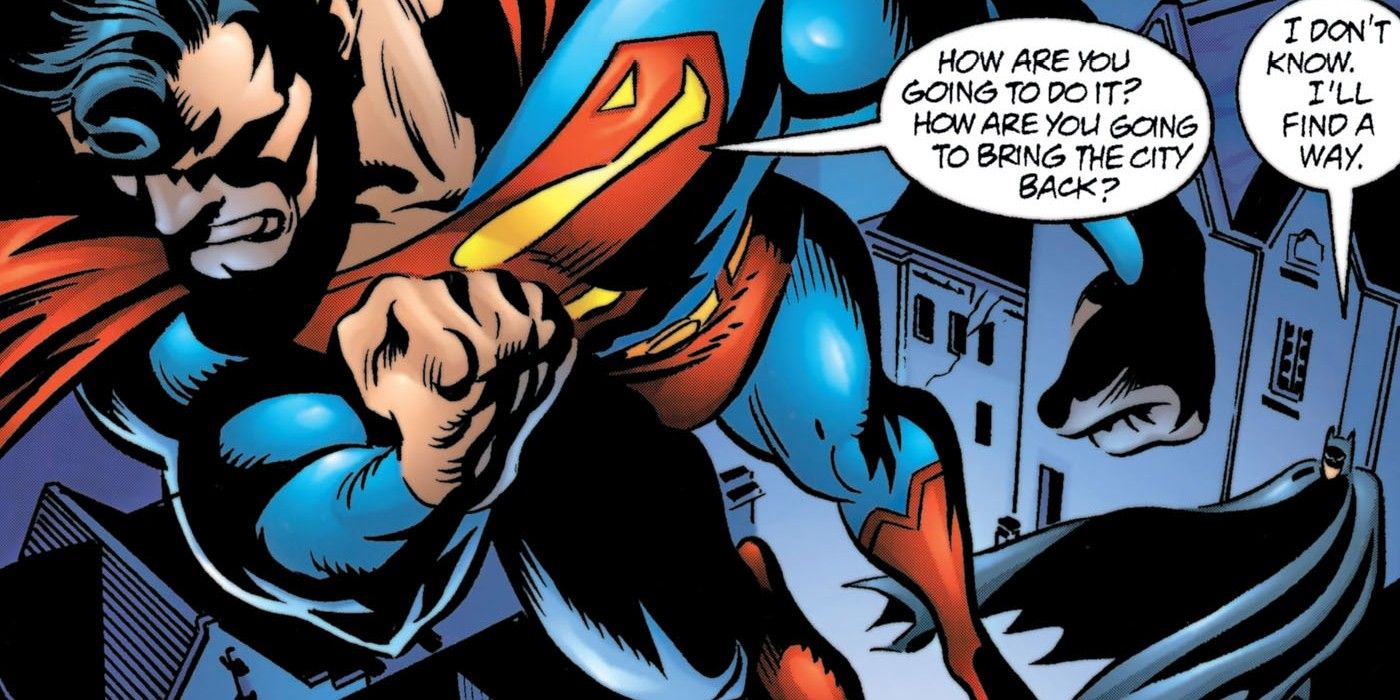
Although Superman and Batman are good friends, they tend to stay out of each other's affairs. Clark Kent trusts Bruce Wayne to take care of Gotham, and Bruce trusts Clark to watch over Metropolis. Of course, during the extraordinary events of "No Man's Land," Superman had to make an exception.
In Batman #566, by Kelley Puckett, Jon Bogdanove, Eduardo Barreto, Richard Horie and Tanya Horie, Clark made his way to Gotham City. Hearing that the federal government abandoned Gotham after a crippling earthquake, Superman arrived to help as much as he could. The first thing Clark did was reclaim a power station from the Mad Hatter, who ruled over part of Gotham.
Batman saw this and warned Superman to stay out of the situation. The Dark Knight cautioned the Man of Steel that he was out of his depth in "No Man's Land." Yet Clark was persistent, forcing Batman to give him 24 hours to help as many people as he could. With this deadline in mind, the Man of Tomorrow helped an electrical engineer rebuild Gotham's power station. Clark's goal was to return light to Gotham.

After repairing the station, Superman took on Mister Freeze, who was attempting to destroy the main power conduit. The Man of Steel stopped Freeze before returning to the power station. Once there, Clark was horrified to see that the engineer had become the new ruler of this territory. Indeed, the engineer was exchanging power for canned goods, ruling over his fellow Gothamites. Realizing that Gotham's problems weren't going to be solved overnight, Superman left the city.
Despite this initial setback, Superman remained watchful over Gotham, returning in JLA #32, by Mark Waid, Devin Grayson and Mark Pajarillo. As part of the Justice League, Superman worked with The Huntress to stop outside groups, such as Locus, from taking advantage of Gotham's situation.
It wasn't until Batman: Shadow of the Bat #92, by Devin Grayson and Dale Eaglesham, that the Man of Tomorrow made his full return to Gotham. This time, however, Superman only appeared in his Clark Kent identity, rearranging his appearance to look like a citizen of Gotham as well. Clark attempted to walk among the people, helping individuals rather than fixing the entire city.
For example, Clark helped one man tend to his garden and defend Gotham's residents from the fascistic Blue Boys, a gang of ex-GCPD officers. During a skirmish with the Blue Boys, Batman intervened to help Clark and his fellow Gothamites.

Clark was pleased that Bruce began working with his allies again and saw that the city was in good hands. Although Bruce was afraid that Clark was trying to fix Gotham single-handedly, Clark clarified why he returned. Seeing that Gotham was in a dry spell, Clark came to bring rain to the city. Realizing that some problems can't be easily solved, Clark returned to help in the smaller ways.
Superman's appearances in "No Man's Land" said a lot about the character in general. Specifically, The Man of Tomorrow's initial appearance addressed a common misconception about the character. Superman is often seen as an all-powerful being who can solve any problem. Yet, despite all his power, Superman can't fix societal issues, such as the power vacuum in the desolate Gotham City.
Superman's next major appearance expressed everything that made him a hero. For one thing, the Man of Steel returned as Clark Kent, not Superman. It's Clark's goodness and humanity that allows him to do the most good. Just like anyone else, Clark uses his gifts to help others, either by bringing rain to Gotham or by helping its citizens tend to their gardens. It's the small things that make a big difference.
Above all, "No Man's Land" depicted the strong friendship between Superman and Batman. Clark cares for Bruce and checks in on him when things get tough. Although he can't fix everything, Superman does what he can for those in need, especially his friends.
0 Comments